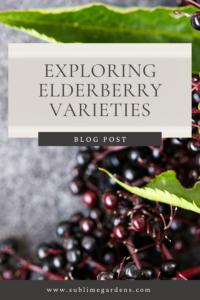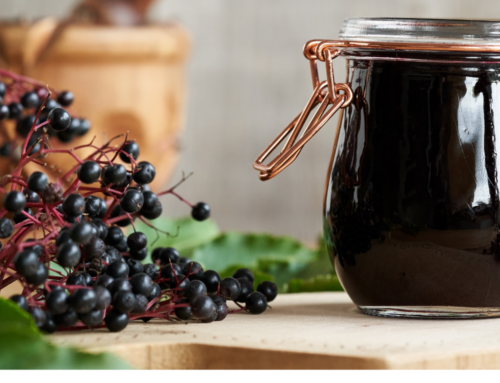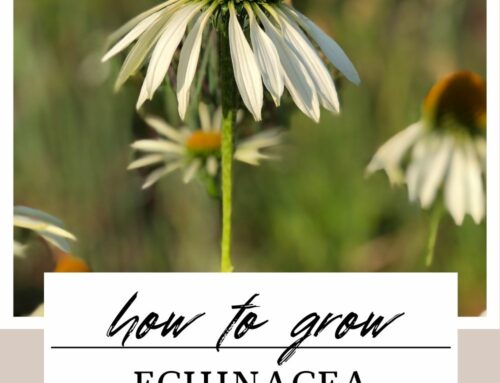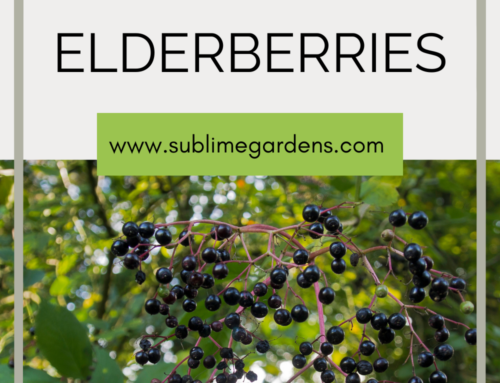Exploring Elderberry Varieties
The elderberry has been cultivated by gardeners for centuries and is steeped in tradition with its medicinal berries and flowers, as well as the beauty it offers to any landscape design. The elderberry we are most familiar with in North America is the American Elderberry, but many other varieties exist, each bringing unique characteristics and strengths.
From medicinal berries and bountiful blooms to hearty rootstock that is acclimated to poor soils, the elderberry has a cultivar for whatever your needs are. Use this guide to help you pick which ornamental or medicinal elderberry variety would best compliment your home garden.
1. American Elderberry (Sambucus canadensis)
The American Elderberry stands out from other varieties due to its adaptability to the diverse climate of North America and its natural resistance to pests and diseases, along with its ability to support local wildlife. The American variety is known for its larger clusters of berries and flowers, which are highly valued for their medicinal properties.
Characteristics:
- Size: Typically grows 5-12 feet tall.
- Flowers: Produces large, flat-topped clusters of white flowers in early summer.
- Berries: Yields small, dark purple to black berries in late summer to early fall.
- Hardiness: Thrives in USDA zones 3-9.
- Adaptability: Highly adaptable to different soil types and climates in North America.
Popular Cultivars:
- ‘Ranch’: Known for their prolific berry production and ease of cultivation. Ranch elderberries come in smaller compact bushes that make harvesting a breeze. Ranch elderberries are also appreciated for their resilience and adaptability to various soil conditions and climates.
- ‘Adams’: A vigorous grower with large clusters of berries, often used in commercial production. Additionally, they are valued for their ornamental appeal, with large, showy flower clusters that attract pollinators and enhance garden aesthetics.
- ‘Bob Gordon’: This variety is particularly favored for the quality of its fruit, with large sweet berries that ripen uniformly and are resistant to shattering. This variety is well adapted to various growing conditions, and has been bred for disease resistance.
All of these cultivars are available at our nursery, Sublime Gardens, in Snohomish, Washington – View our selection HERE
Best Uses:
- Excellent for making teas, syrups, jams, jellies, and wines.
- Flowers can be used for making elderflower cordial and teas.
2. European Elderberry (Sambucus nigra)
European elderberries are renowned for their potent medicinal properties and widespread use in traditional medicine. In comparison to other varieties, European elderberries are known for their slightly stronger and more bitter flavor, which makes them particularly suitable for medicinal syrups, tinctures, and extracts.
Characteristics:
- Size: Can reach up to 20 feet tall.
- Flowers: Bears creamy white flower clusters in late spring to early summer.
- Berries: Produces dark purple to black berries that ripen in late summer.
- Hardiness: Suitable for USDA zones 4-8.
- Tradition: Widely grown in Europe for culinary and medicinal purposes.
Popular Cultivars:
- ‘Black Beauty’: Features dark purple foliage and pinkish flowers, adding ornamental value.
- ‘Black Lace’: Has finely cut, dark purple leaves and pink flowers, resembling a Japanese maple.
- ‘Haschberg’: A heavy-bearing variety, popular in commercial cultivation for its large berries.
- ‘Emerald Lace‘: A rare variety with green, fern-like foliage that resembles a Japanese maple. It offers a beautiful edible harvest and is attractive to birds and pollinators.
Best Uses:
- Ideal for medicinal applications and syrups, wines, and liqueurs.
- Flowers are used in elderflower syrups, cordials, and desserts.
3. Blue Elderberry (Sambucus cerulea)
Blue elderberries, native to the western regions of North America, are known for their distinctive blue-black berries covered with a waxy bloom. Blue elderberries are particularly valued for their versatility in culinary uses. Their large, attractive clusters of berries and flowers also provide significant ecological benefits, supporting pollinators and wildlife.
Characteristics:
- Size: Grows up to 15-30 feet tall.
- Flowers: Produces small, creamy white flower clusters in spring.
- Berries: Bears blue-black berries covered with a white, powdery bloom.
- Hardiness: Suitable for USDA zones 5-10.
- Habitat: Native to the western United States, often found in riparian areas.
Popular Cultivars:
- ‘Wyldewood’: Known for its high yield and vigorous growth.
Best Uses:
- Great for making syrups, jams, and wines.
- Berries are also eaten fresh or dried for later use.
4. Red Elderberry (Sambucus racemosa)
Red elderberries have striking bright red berries and unlike other elderberry varieties, red elderberries contain higher levels of cyanogenic glycosides, making them potentially toxic if not properly prepared. Red elderberries are native to the Pacific Northwest and are commonly valued for their ornamental qualities, with their vibrant berries and attractive flower clusters enhancing garden aesthetics and supporting local wildlife by providing food for birds and other animals.
Characteristics:
- Size: Typically grows 6-20 feet tall.
- Flowers: Produces small, white to cream-colored flowers in pyramidal clusters.
- Berries: Yields bright red berries that are generally considered toxic when raw and should be cooked before consumption.
- Hardiness: Thrives in USDA zones 3-7.
- Habitat: Found in forested areas across North America and Europe.
Popular Cultivars:
- ‘Lemony Lace’: Features bright, golden foliage with red new growth, making it an attractive ornamental plant.
Best Uses:
- Primarily grown for ornamental purposes.
- Berries can be used for making jams and wines when properly cooked.
Each elderberry variety has its own unique characteristics and uses, making them versatile additions to gardens and landscapes. Whether you’re looking to grow elderberries for their medicinal benefits, culinary uses, or ornamental appeal, there’s a variety that suits your needs.
Questions? Let us know in the comments. We would love to help you pick the right elderberry for your needs.
Happy gardening!








Leave A Comment